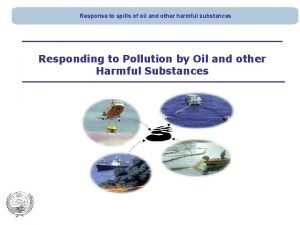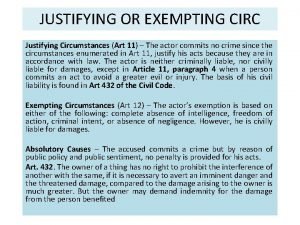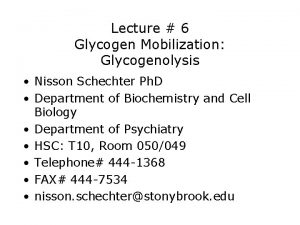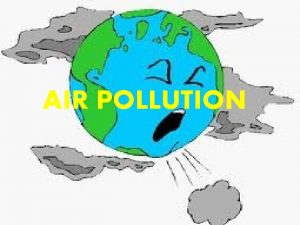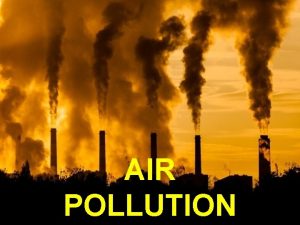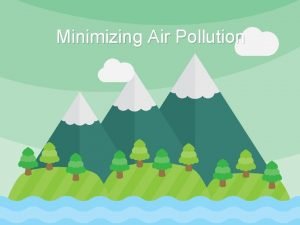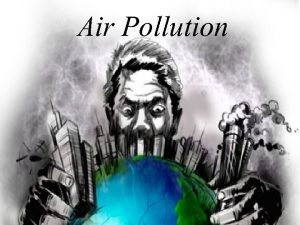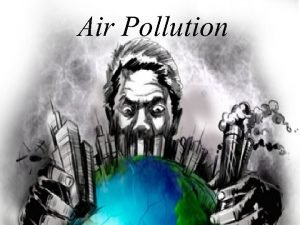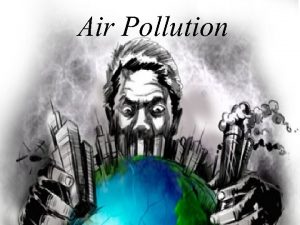Reducing air pollution reducing exposure mitigating health impacts


















- Slides: 18

Reducing air pollution: reducing exposure, mitigating health impacts and climate changeoptions for financing Combatting urban air pollution impacts on maternal and child health in Asia Ulaanbaatar, Mongolia, 29 – 30 October 2019 UNFCCC Secretariat Gajanana Hegde

Introduction/Outline • Evidences, good practices and lessons learned in efforts to reduce air pollution and climate change mitigation a) Sectoral interventions to reduce pollution (infrastructure, urban planning, residential cooking) b) Best practices, Policy options, Challenges • Low-emissions transitions across five economic sectors (electricity, heavy industry, residential, surface transport, and agriculture) responsible for >60% of global greenhouse gas emissions carry cobenefits of reduced air pollution and improved health a) Co-benefits increase the incentives for early mitigation action and vice versa 2

Lessons from CDM: market mechanism under the Kyoto Protocol Best practices and examples of improved air quality - Challenges 3

CDM BRT Project in Bogota 4

Delhi Metro CDM project Project 4463 : Metro Delhi, India a) Mass Rapid Transit System (MRTS), 102 km length b) Annual emission reduction of 529, 043 t. CO 2, with 92% issuance success rate, 3. 8 million tons of emission reduction to date 5

Clean cookstove CDM projects/Po. As • With 63 Po. As registered, clean cookstoves are by far the most popular Po. A type. 337 CPAs have been included in these Po. As and, in addition, 42 project activities are registered. • More than 6 million CERs have been issued for clean cookstoves Number CERs issued (k. CERs) CDM projects 42 602 CDM Po. As 63 5, 775 >> CPAs Total (projects + CPAs) 337 379 6, 377 Source: UNFCCC and UNEP DTU Partnership • Scaled up activities under the Paris Agreement (e. g. over 30 countries indicate clean cooking in their nationally determined contributions, for example Bangladesh targets 30 million clean cookstoves by 2030) 6

7

Article 6 – co-operation towards NDCs Cooperative Approaches Articles 6. 2 and 6. 3 and decision 1/CP. 21 paragraph 36 The Mechanism Articles 6. 4 to 6. 7 and decision 1/CP. 21 paragraphs 37 and 38 Framework for non-market approaches Articles 6. 8 and 6. 9 and decision 1/CP. 21 paragraphs 39 and 40 8

9 “Cooperative Approaches” COUNTRY B COUNTRY A EG: LINKED PROGRAMMES Source: Quebec NDC Countries are Countrie developing s are guidance NDC

1 0 “The Mechanism” UNFCCC ARTICLE 6. 4 PARIS AGREEMENT SUPERVISORY BODY COUNTRY A CREDITS COUNTRY B MEETS RULES Cookstove projects NDC Countries are developing rules guidance NDC

1 1 “The Framework for non-market approaches” COUNTRY B COUNTRY A EG: Energy Efficiency Programme SHARE BEST PRACTICE Countries are developing work programme EG: Energy Efficiency Programme

Article 6 pilots • <350 million USD invested Source: Moving towards next generation carbon markets observations from article 6 pilots, Climate finance innovators (2019) 12

Article 6 pilot projects- clean cookstoves Title Peru (efficient cook stoves) Senegal Host country Type Peru Efficient cook stoves (Tuka Wasi stoves) Senegal Domestic biogas Implementer Klik Foundation The Adaptation Benefit Africa: Ethiopia, Clean cooking, etc Af. DB Mechanism (ABM) Uganda, Nigeria, Cote d'Ivoire Article 6. 8: Where adaptation benefits can be delivered The Standardized Crediting Framework (SCF) Rwanda Eff cookstoves (Building on Inyenyeri cookstove (CDM Po. A with ref=6207)) World bank Ci-Dev The Standardized Crediting Framework (SCF) Senegal Rural energy access (improved cookstoves, etc) World bank Ci-Dev Source: UNEP DTU Partnership 13

ISO Standards for Stove Testing Source: ISO Laboratory Standard Overview, Michael Johnson, Berkeley Air Monitoring Group, Climate Action and Clean Cooking Co-benefits, Washington DC, September, 2019 14

ISO Tiers of Stove performance Source: ISO Laboratory Standard Overview, Michael Johnson, Berkeley Air Monitoring Group, Climate Action and Clean Cooking Co-benefits, Washington DC, September, 2019 15

Source: Standards Implementation at the national level: How different interventions help achieve goals, Naomi Wagura, CLASP, Expert Consultation: the importance of setting standards – Policy Workshop, 23 rd July 2019 16 Kampala, Uganda

Ghana Cookstove Market Source: Standards Implementation at the national level: How different interventions help achieve goals, Naomi Wagura, CLASP, Expert Consultation: the importance of setting standards – Policy Workshop, 23 rd July 2019 17 Kampala, Uganda

Policy Recommendations Source: Standards Implementation at the national level: How different interventions help achieve goals, Naomi Wagura, CLASP, Expert Consultation: the importance of setting standards – Policy Workshop, 23 rd July 2019 Kampala, Uganda 18
 Managing economic exposure and translation exposure
Managing economic exposure and translation exposure Eksposur translasi adalah
Eksposur translasi adalah Economic exposure
Economic exposure Managing economic exposure and translation exposure
Managing economic exposure and translation exposure Section 1 what causes air pollution answer key
Section 1 what causes air pollution answer key Chapter 12 air section 1 what causes air pollution
Chapter 12 air section 1 what causes air pollution Examples of mitigating factors
Examples of mitigating factors Mitigating activity sopep/smpep
Mitigating activity sopep/smpep Justifying circumstances article 11
Justifying circumstances article 11 Computer network vulnerabilities
Computer network vulnerabilities Air higroskopis adalah
Air higroskopis adalah Reducing and non reducing sugar
Reducing and non reducing sugar Uridine diphosphate glucose
Uridine diphosphate glucose Carbohydrate classification
Carbohydrate classification Reducing sugar vs non reducing sugar
Reducing sugar vs non reducing sugar 2 causes of soil pollution
2 causes of soil pollution Definition of pollution in simple words
Definition of pollution in simple words Land water and air pollution
Land water and air pollution Introduction of pollution
Introduction of pollution







